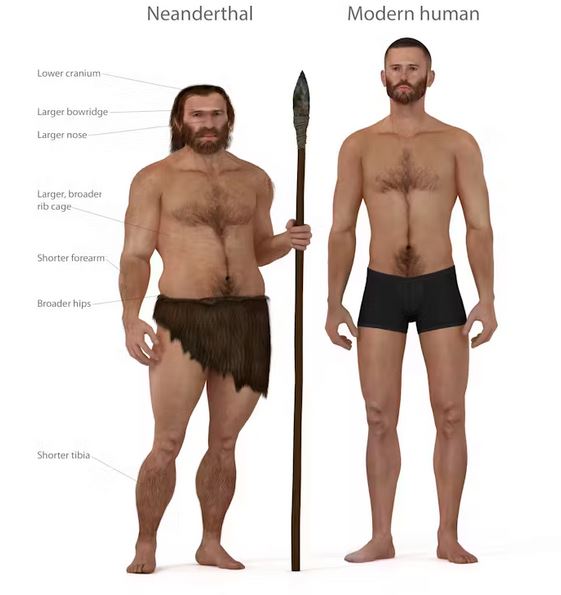Note4Students
From UPSC perspective, the following things are important :
Prelims level: Adenovirus, herpesvirus, and papillomavirus
Mains level: NA
Why in the News?
- Researchers found traces of many present-day viruses in the bones of two Neanderthals who lived 50,000 years ago, providing a new perspective on their extinction.
Breakthrough Study on Neanderthals
Health Impacts Inherited in Modern Human Beings:Modern humans inherit various health impacts from Neanderthals, including skin conditions, allergies, metabolism, nicotine addiction, mood disorders, sleep patterns, blood clotting, sense of smell, and UV radiation response. |
Who were the Neanderthals?
-
- Neanderthals were a distinct species of hominins that lived in Europe and parts of Asia around 400,000 to 40,000 years ago during the Middle to Late Pleistocene Epochs.
- Their evidence was first found in 1856 in the Neander Valley in present-day Germany.
- Physical Features:
-
-
- Neanderthals were robustly built, with a stocky and muscular frame adapted to cold climates.
- They had large brains, comparable in size to modern humans, indicating advanced cognitive abilities.
- Distinctive features included a prominent brow ridge, large nose, and a receding chin.
-
- Social Life:
-
-
- Neanderthals were skilled hunters and gatherers, using tools such as stone flakes, scrapers, and spears for hunting and butchering animals.
- They utilized fire for cooking, warmth, and protection, as evidenced by the presence of hearths in their archaeological sites.
- Evidence suggests they had complex social structures and engaged in rituals and symbolic behaviours, including burying their dead with grave goods.
-
- Habitat and Distribution:
- Neanderthals inhabited a wide range of environments, including open grasslands, forests, and even cold tundra regions.
-
-
- Their range extended from Western Europe to Central Asia, with evidence of populations in regions such as Spain, France, Germany, Croatia, and the Middle East.
-
- Interactions with Modern Humans:
-
- Neanderthals coexisted with early modern humans (Homo sapiens) for thousands of years in Europe and Asia.
- There is evidence of interbreeding between Neanderthals and modern humans, with genetic studies indicating that non-African humans carry about 1-2% Neanderthal DNA.
PYQ:[2019] The word ‘Denisovan’ is sometimes mentioned in media in reference to (a) Fossils of a kind of dinosaurs (b) An early human species (c) A cave system found in North-East India (d) A geological period in the history of Indian subcontinent |
Get an IAS/IPS ranker as your 1: 1 personal mentor for UPSC 2024

